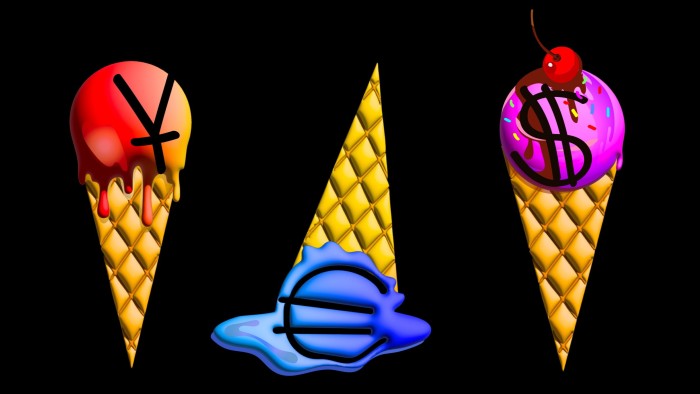Unlock the White House Watch newsletter for free
Your guide to what the 2024 US election means for Washington and the world
Four years ago, the Bank for International Settlements (BIS) — the central bankers’ central bank — unveiled an innovation project that carried the ugly moniker “mBridge”.
This aimed to create a cross-border central bank digital currency linking the central banks of China, Hong Kong, Thailand, UAE and (latterly) Saudi Arabia.
You might think this is arcane. If so, think again: the geeky project symbolises a bigger battle that could matter deeply under US President Donald Trump.
More specifically, last autumn, just before the US election, the BIS unexpectedly pulled out of mBridge, in effect ceding control to China and the rest. BIS claimed this was just because it had reached “minimal viable product” stage. But few believe this. “The Americans demanded [the BIS] stop because it’s a threat,” one participant tells me, explaining that Washington worried that “it might be used to evade [dollar] sanctions”.
And while Agustín Carstens, BIS head, publicly denied that, speculation bubbles on — not least because Trump is undeniably on the monetary warpath: on Truth Social last month he repeated threats to impose “100% Tariffs” on countries trying to “replace the mighty U.S. Dollar” with new currencies or payments systems.
So investors should watch what happens next. For while it is Trump’s threats around trade tariffs that have been grabbing headlines recently, this less-visible fight around money matters deeply. After all (as I have noted before), it is the dollar-based global financial system that is the real source of America’s hegemonic power today, and which Washington wants to defend.
On paper, Trump has no reason to worry. Recent data from the IMF shows that the dollar accounts for about 58 per cent of central bank reserves. This is slightly lower than at the start of the century, but recent diversification has mostly involved smaller currencies — not rivals such as the euro or renminbi.
More striking, Swift data suggests that 49.1 per cent of all payments were in dollars last year, a 12-year high.
But there are three crucial caveats. First, central banks are hoovering up gold “at an eye-watering pace”, as the World Gold Council recently noted. That suggests a desire to hedge their fiat dollar exposure.
Second, the Swift data may be a little misleading since activity is swelling outside western platforms. China is building its own Cross-Border Interbank Payment System. This is small and rudimentary, but it has 160 members and transaction volume has jumped 80 per cent since 2022.
Third, Washington’s financial weaponisation seems to be fuelling — not halting — efforts by others to imagine alternatives. Hence why mBridge matters: if those digital pipes ever work at speed and scale (a big “if”), this would challenge the “hub and spoke” system centred on the US Federal Reserve.
So how will Washington respond? Chris Giancarlo, head of the Commodity Futures Trading Commission during the first Trump administration, hopes it will use carrots — ie policies that make dollar usage utterly compelling for non-Americans. That means championing good economic “values”, he tells me, and embracing more cyber innovation. A “digital dollar project” he co-leads will outline how to do this next week.
This is eminently sensible. But Trump seems minded to use sticks. Last month he issued an executive order banning any central bank digital currency usage in America, since they “threaten the stability of the financial system, individual privacy, and the sovereignty of the United States”.
Instead, he championed bitcoin (never mind that this is viewed as a fiat dollar hedge). More significantly, he also backed the “growth of lawful and legitimate dollar-backed stablecoins worldwide”.
This might seem odd, not least because it is diametrically opposed to the European Central Bank. Some cynics will undoubtedly attribute it to the fact that Howard Lutnick, commerce secretary, helped to build tether, the biggest existing coin.
But, there is another factor, too: Trump’s team think stablecoins might be a secret weapon to promote more — not less — dollarisation. “It’s very good for us,” one tells me. That is because 21st-century stablecoins — like the 20th-century eurodollar market — enable transactions in offshore dollars that are free from onerous onshore regulations. This appeals to many financiers grappling with geopolitical risk (even if stablecoins, unlike eurodollars, do not pay returns).
In practice, the current market cap of stablecoins — about $220bn — is still piddling compared with eurodollars, let alone the $6tn-odd US capital markets.
But the key point is this: as Trump keeps trying to remake — or smash up — the postwar geopolitical order, it is not just tariffs and tanks that matter; financial plumbing does too. These nascent battles about CBDC and stablecoins could well “take centre stage this year”, as the Atlantic Council notes. Anyone know how to parse mBridge in Chinese?
gillian.tett@ft.com
https://www.ft.com/content/bfafb8f7-bd1c-48bb-85f4-8ba25475c0a3


